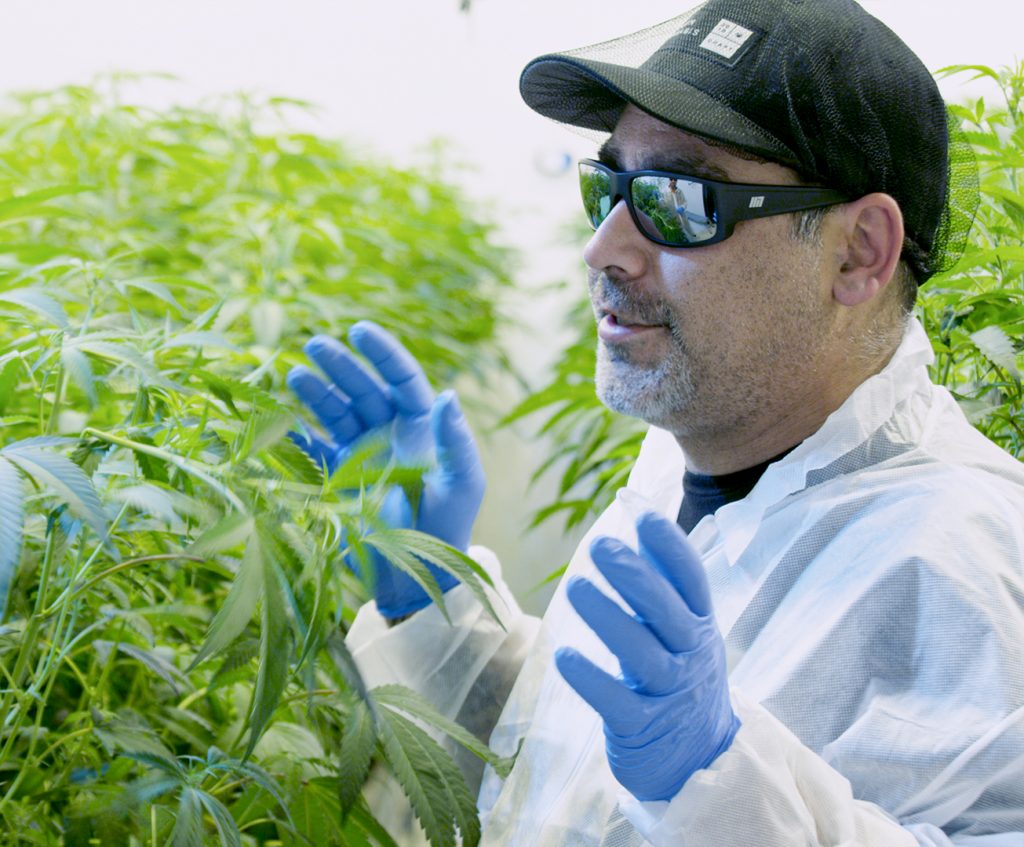Super cropping cannabis is a high-stress training technique (HST) that maximizes your indoor garden’s canopy footprint. A wider canopy footprint means bigger yields and beefier buds with denser resin glands. It’s an easy technique that can give your plants a new lease on life.
Maximum Canopy Footprint for Better Growth & Buds
Super cropping serves to widen your canopy’s footprint, thereby, exposing its light-deprived middle stems. Generally, cannabis plants grow straight up. Within its dense canopy, you’ll find your “lollipop” stems, which can become blocked by the higher stems and leaves.
In the wild and exposed to external stressors such as predators, cannabis plants’ defenses are activated. In response, plants develop sturdier foliage and higher-potency buds with a more complex and pleasant aroma and flavor.
In your indoor garden, super cropping is a strategic stressor that triggers your plant’s protective traits. If done correctly, this form of HST results in plants with more vigorous growth and more resin. What doesn’t kill them, truly makes them stronger.
Super Cropping 101: How It’s Done
Super cropping is a relatively easy training technique for growers of all skill levels. Here’s a step by step on how to get it done without hurting your plants too much.
- Start by identifying where the plant has started to stretch too far. The idea is to bend those top stems away from the plant to allow those lower lollipops to get plenty of light. Exposing all of your bud sites to light gives them the potential to grow big and potent.
- Give your stems a little pinch. Compress the inner fiber without breaking open its exterior tissue and bend. You may have to twist and bend it a bit but be careful not to snap the stem.
- Bend the stem to a nearly 90º angle. The result should be a relatively leveled canopy that’s wider and bushier-looking.
- Spin the plant to perform the same bending technique across the entire canopy to expose the middle stems.
As you bend each stem, make sure to bend it away from the middle stems. Don’t crop the stems into the plant. While this method may seem aggressive, when done right, it’s a perfectly safe stressor.
Just remember, you’re not trying to break the actual stems. Breaking the stem can make your plant vulnerable to bacteria and infection. All you’re trying to do is just lay the stretched-out stems down a little bit. By doing this, you make the canopy a more uniform level.
For new growers, super cropping may seem like something that your plant cannot recover from. What will happen is that everything in the middle is going to grow up and the stems are going to pull out of their bent position toward a more normal upward-facing position toward the light.
Safer than harmful plant growth regulators (PGRs), super cropping is a safe way to modify plant growth while maximizing trichome production.
Troubleshooting: Broken Stems
As a new grower, you may end up with a few broken stems. Fret not, there are ways to recover from this damage. If you see cracked or broken exterior plant tissue, you can use some tape to provide support and protection for the stem. Over time, the bend develops a knot meant to support and transport nutrients to its bud site.
Super cropping your plants can be performed about four weeks into your plant’s vegetative growth. With enough time to recover before flowering, it’ll heal into a more robust and higher-yielding plant. Start swimming in a sea of green with the super cropping technique.








